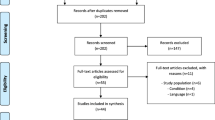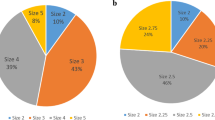Abstract
To determine if a negative preoperative reduction cough stress test is a viable method of detecting occult stress incontinence or urge incontinence in women undergoing surgical repair of advanced pelvic organ prolapse. A retrospective chart review was done on all patients who denied any urinary complaints and had repair of advanced pelvic organ prolapse, grade two or greater, without the addition of an anti-incontinence procedure. Additionally patients had a simple office filling study done at the time of initial examination that failed to show the sign of stress incontinence or detrusor instability. Any urinary dysfunction that developed postoperatively was noted. A total of 53 patients met the inclusion criteria. Of these patients, one patient (1.9%) developed genuine stress incontinence, and one patient complained of urgency (1.9%). Patients without urinary complaints and a negative office filling study, who were present for surgical correction of advanced pelvic organ prolapse, have a low incidence of developing occult stress incontinence. Further work-up would not be cost effective.
Similar content being viewed by others
References
Richardson DA, Bent AE, Osterguard DR (1983) The effect uterovaginal prolapse on urethrovesical pressure dynamics. Am J Obstet Gynecol 146:901–905
Bump RC, Fantl JA, Hurt WG (1988) The mechanism of urinary continence in women with severe uterovaginal: results of barrier studies. Obstet Gynecol 72:291–295
Bergman A, Koonings PP, Ballard CA (1988) Predicting postoperative urinary incontinence development in women undergoing operation for genitourinary prolapse. Am J Obstet Gynecol 158:1171–1175
Rosenzweig BA, Pushkin S, Blumfield D, Bhatia NN (1992) Prevalance of abnormal urodynamic test results in continent women with severe urogenital prolapse. Obstet Gynecol 79:539–542
Beck RP, McCormic S, Nordstrom L (1991) A 25 year experience with 519 anterior anterior colporrhaphy procedures. Obstet Gynecol 78:1011–1018
Myers DL, Lasala CA, Hogan JW, Rosenblatt PL (1998) The effect of posterior wall support defects on urodynamic indices in stress urinary incontinence. Obstet Gynecol 91:710–714
Uebersax JS, Wyman JF, Shumaker SA, McMlish DK, Fantl JA (1995) Short forms to assess life quality and symptom distress for urinary incontinence in women: the incontinence impact questionnaire and the urogenital distress inventory. Neurourol Urodyn 14:131–139
Baden W, Walker T (1992) Surgical repair of vaginal defects. Lippincott Company, Philadelphia
Author information
Authors and Affiliations
Corresponding author
Rights and permissions
About this article
Cite this article
Kleeman, S., Vassallo, B., Segal, J. et al. The ability of history and a negative cough stress test to detect occult stress incontinence in patients undergoing surgical repair of advanced pelvic organ prolapse. Int Urogynecol J 17, 27–29 (2006). https://doi.org/10.1007/s00192-005-1367-5
Received:
Accepted:
Published:
Issue Date:
DOI: https://doi.org/10.1007/s00192-005-1367-5




